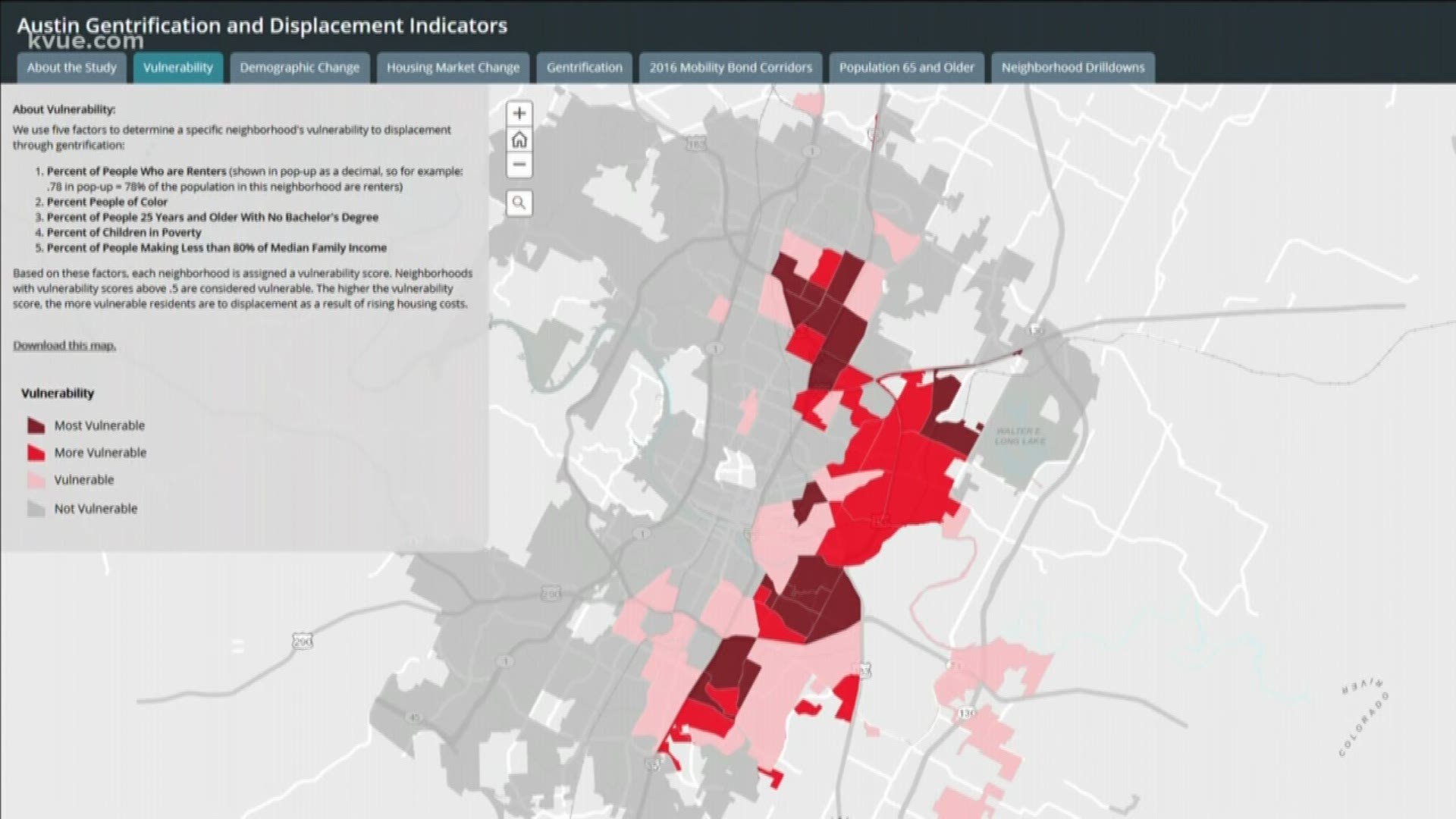AUSTIN — UT researchers are releasing a new report that takes a closer look at Austin’s gentrification problem.
The report, Uprooted: Residential Displacement in Austin’s Gentrifying Neighborhoods and What Can Be Done About It, shows gentrification is happening in 16 Austin neighborhoods and more than 23 others are at risk. This is part of UT’s year-long study.
Researchers call it a first of its kind. Not only does it show all the neighborhoods that are gentrified, but it also shows those that are susceptible, meaning they're at risk of gentrification.
Sometimes change can be hard to see, but those who live in the Lanier neighborhood will tell you change is happening.
RELATED:
“They're rebuilding these houses, they're taking them down to the two-by-fours and just rebuilding them and selling them for big money,” said William Kasper, who lives in Lanier neighborhood.
“Over there, she just purchased that house and then the guy next door to me, he just purchased that house not too long ago, and the corner house is a rental property,” said Maria Rodriguez, another resident of Lanier.
Rodriguez said she's lived in the North Austin neighborhood for more than 25 years, and in that time, most neighbors on her block have come and gone -- many homeowners replaced with renters. That's one of the reasons why the Lanier neighborhood is considered "most vulnerable" to displacement through gentrification.
Lanier is one of the neighborhoods shown in dark red on UT's vulnerability map. It looks at five factors: percent of renters, percent of people of color, percent of people 25 years and older with no bachelor’s degrees, percent of children in poverty, and percent of people making less than 80 percent of median family income. Researchers said this vulnerability means it would be the most impacted by rising housing costs.
This is all part of new research done by UT professors Heather Way, Elizabeth Mueller, and Jake Wegmann. The goal of the study is to identify gentrification in Austin neighborhoods.
Lanier itself isn't gentrified, but according to their report, it is one of 23 neighborhoods that are at risk. This is all important information for the city to know so it can stabilize neighborhoods and help vulnerable people remain in their communities.
Those like Rodriguez said they're nervous about the direction things could be headed.
“Sometimes I tell my son, 'Well, maybe we should sell the house and go somewhere else cause it costs so much to live here,'” said Rodriguez.
Way, one of the researchers, said she hopes the city will use this information to identify what each neighborhood needs so it can adopt solutions to offset gentrification. The researchers plan to release the full report and present their findings at Tuesday's city council meeting.

